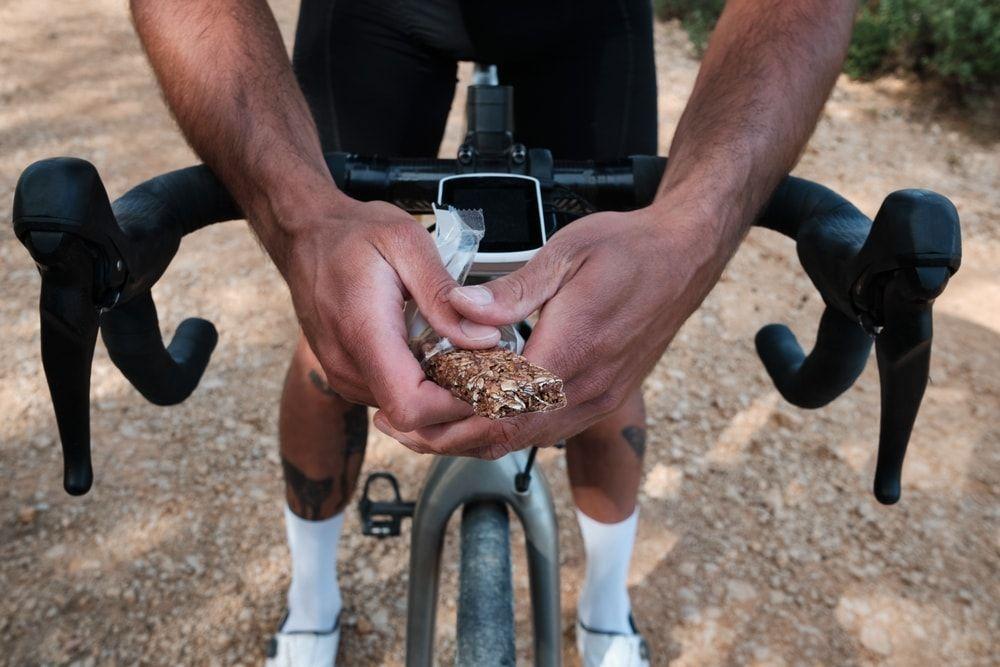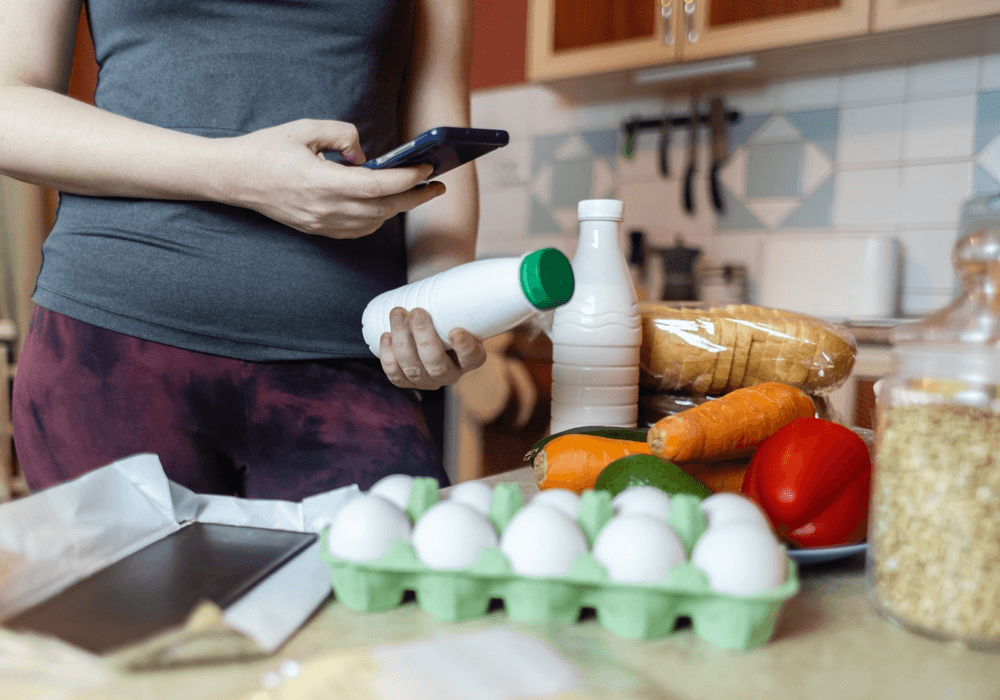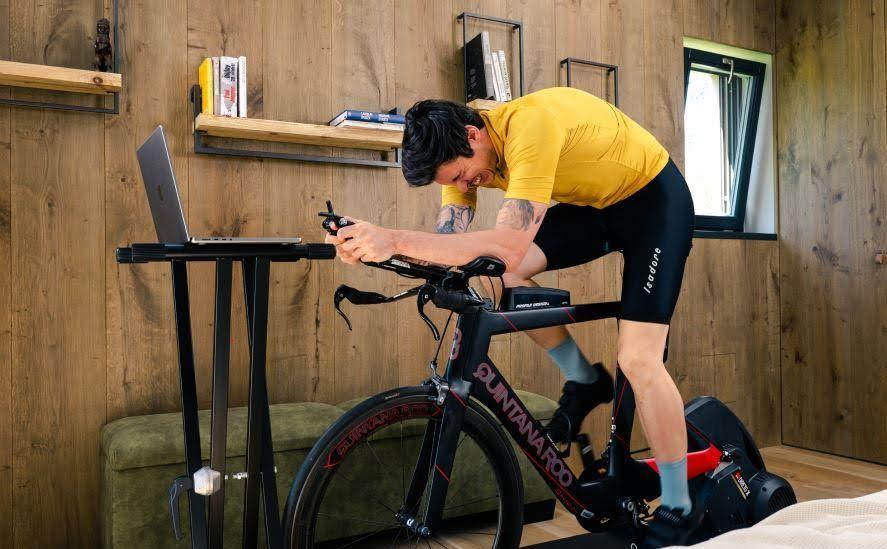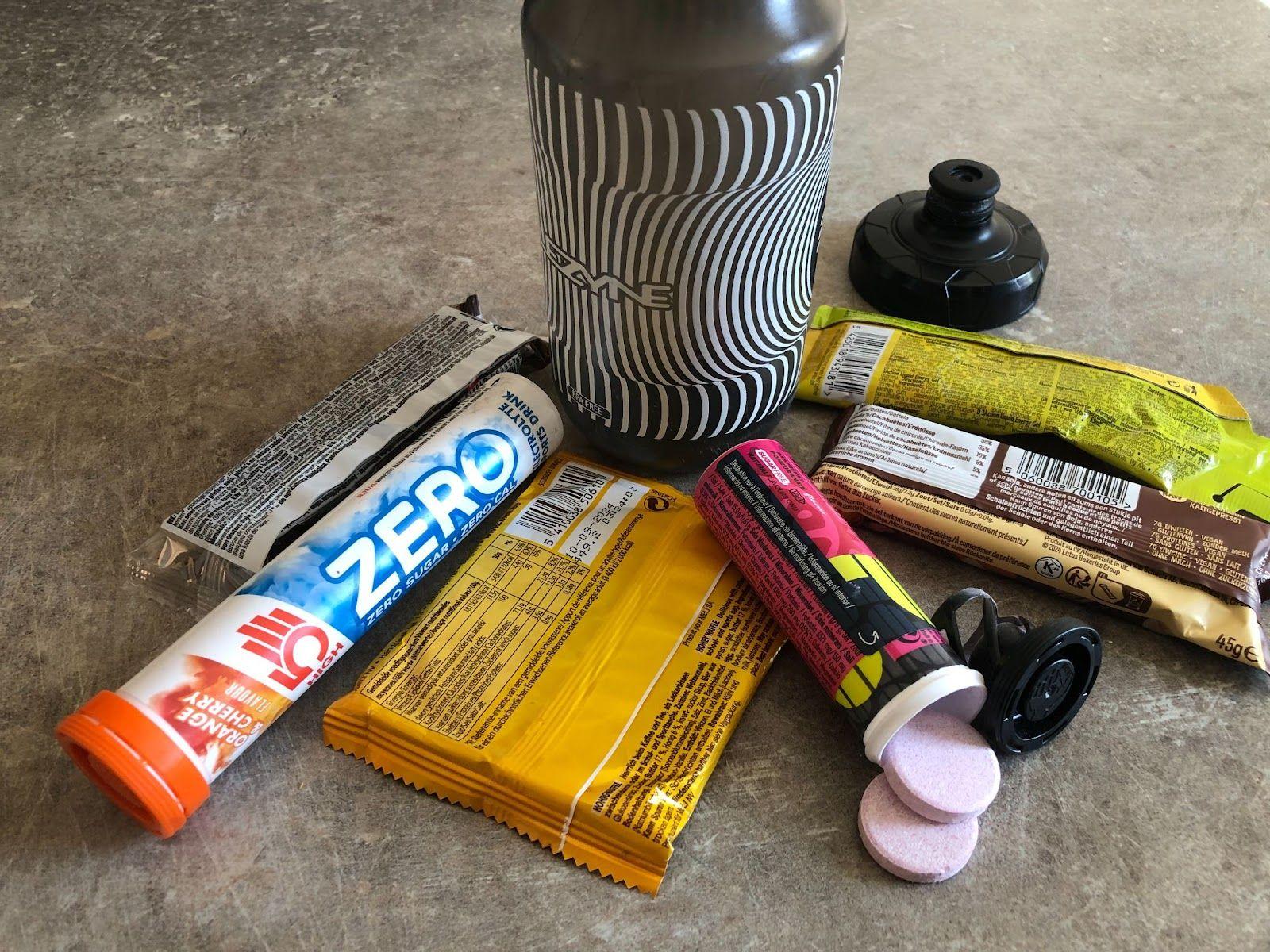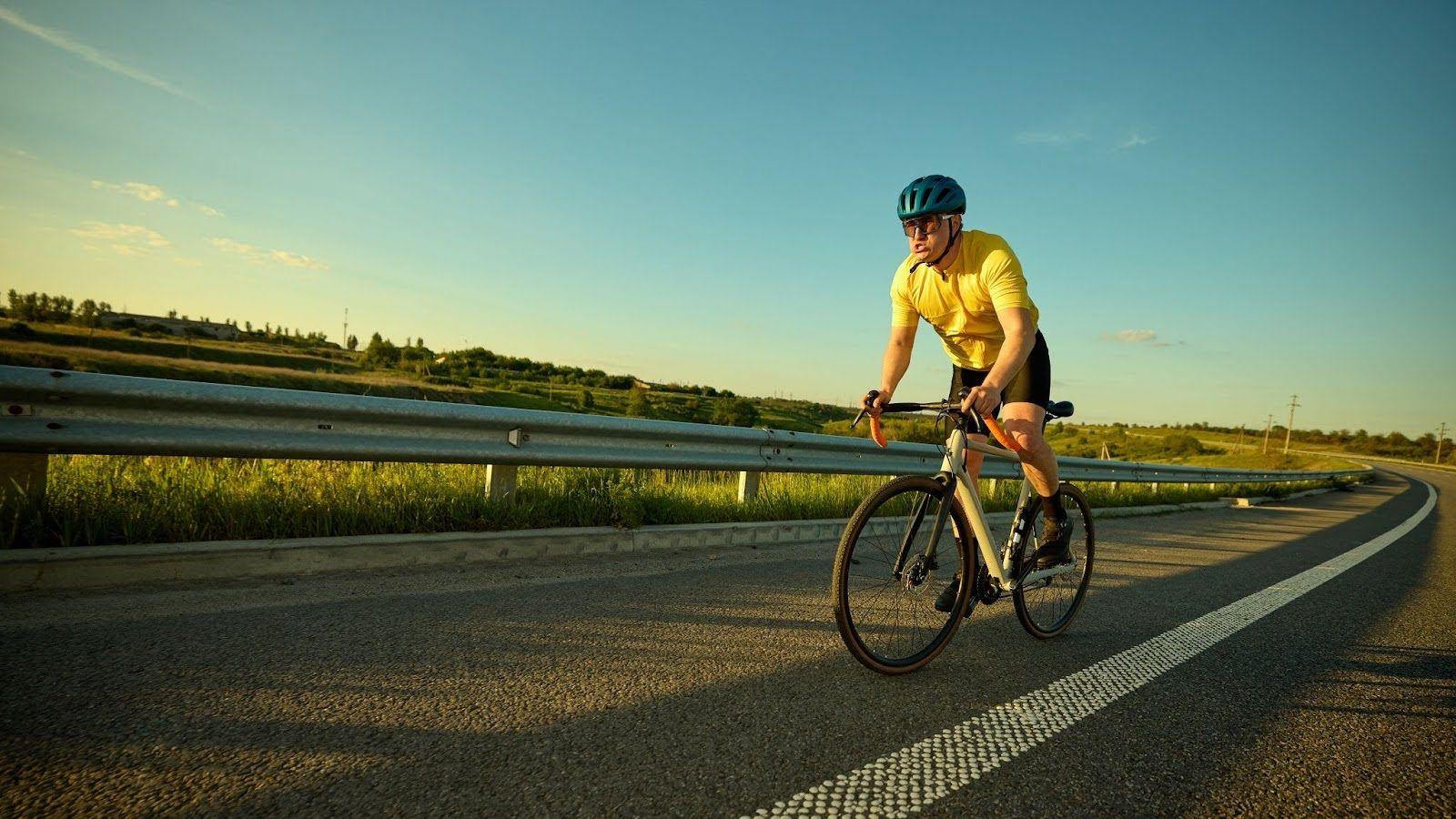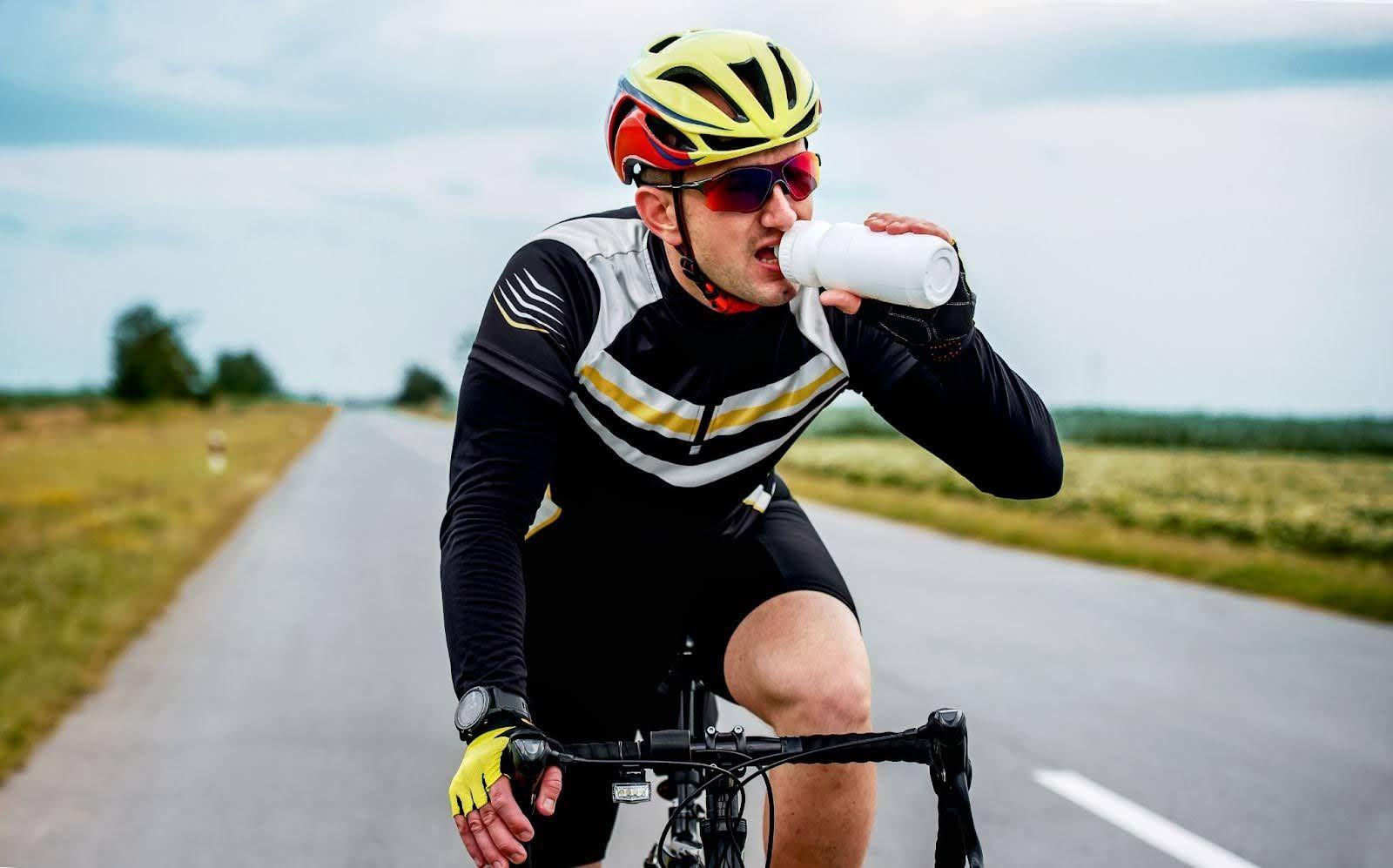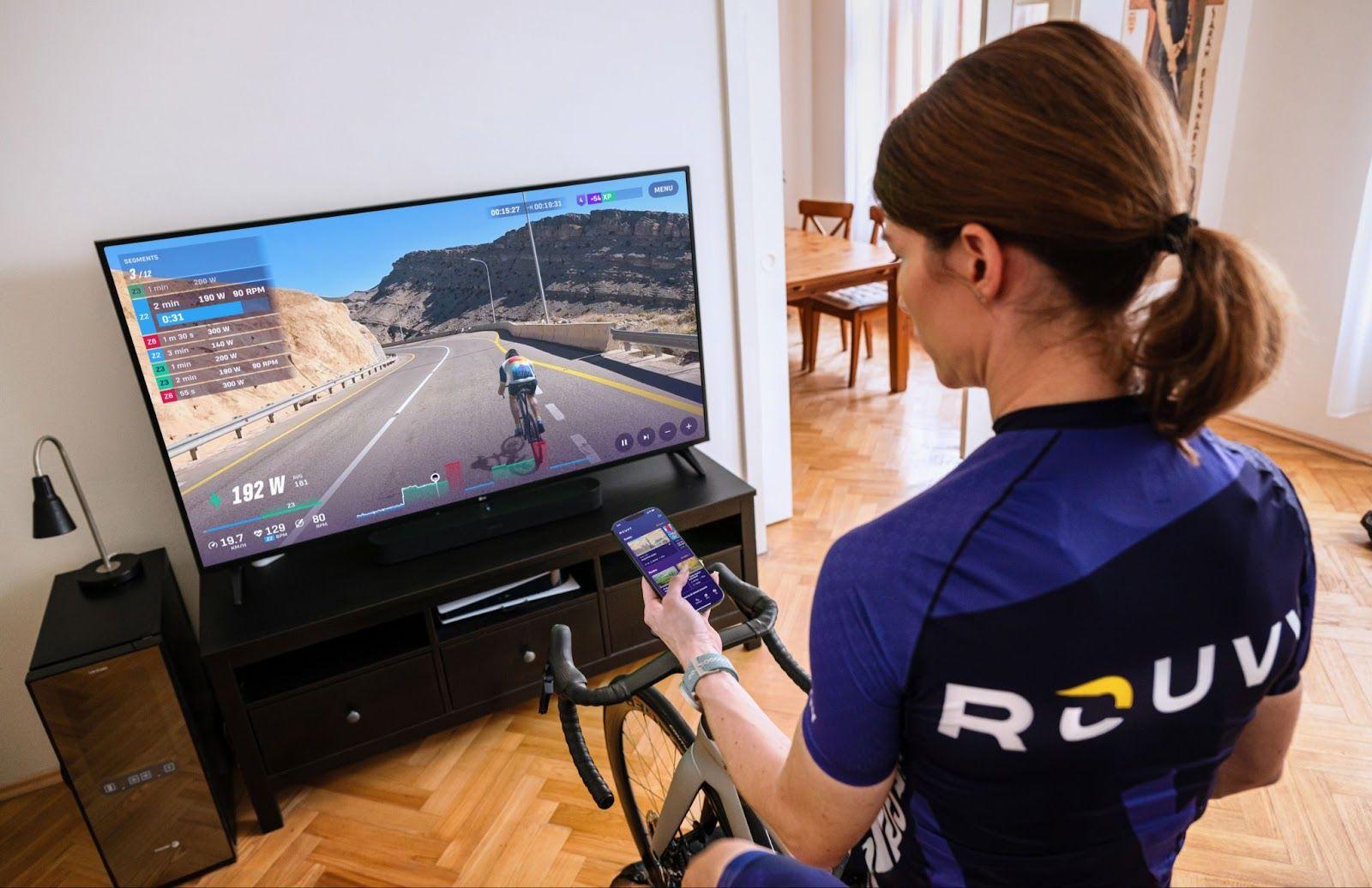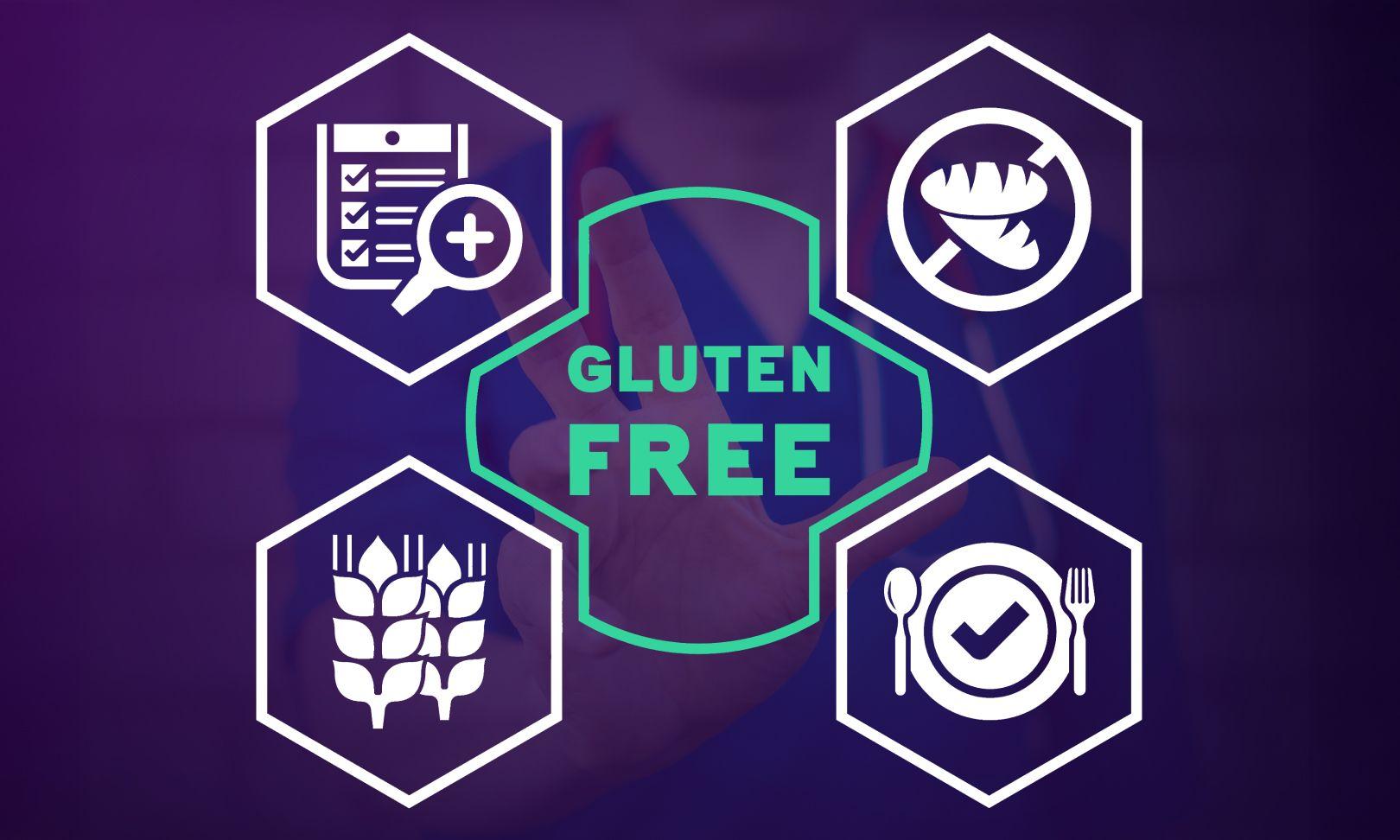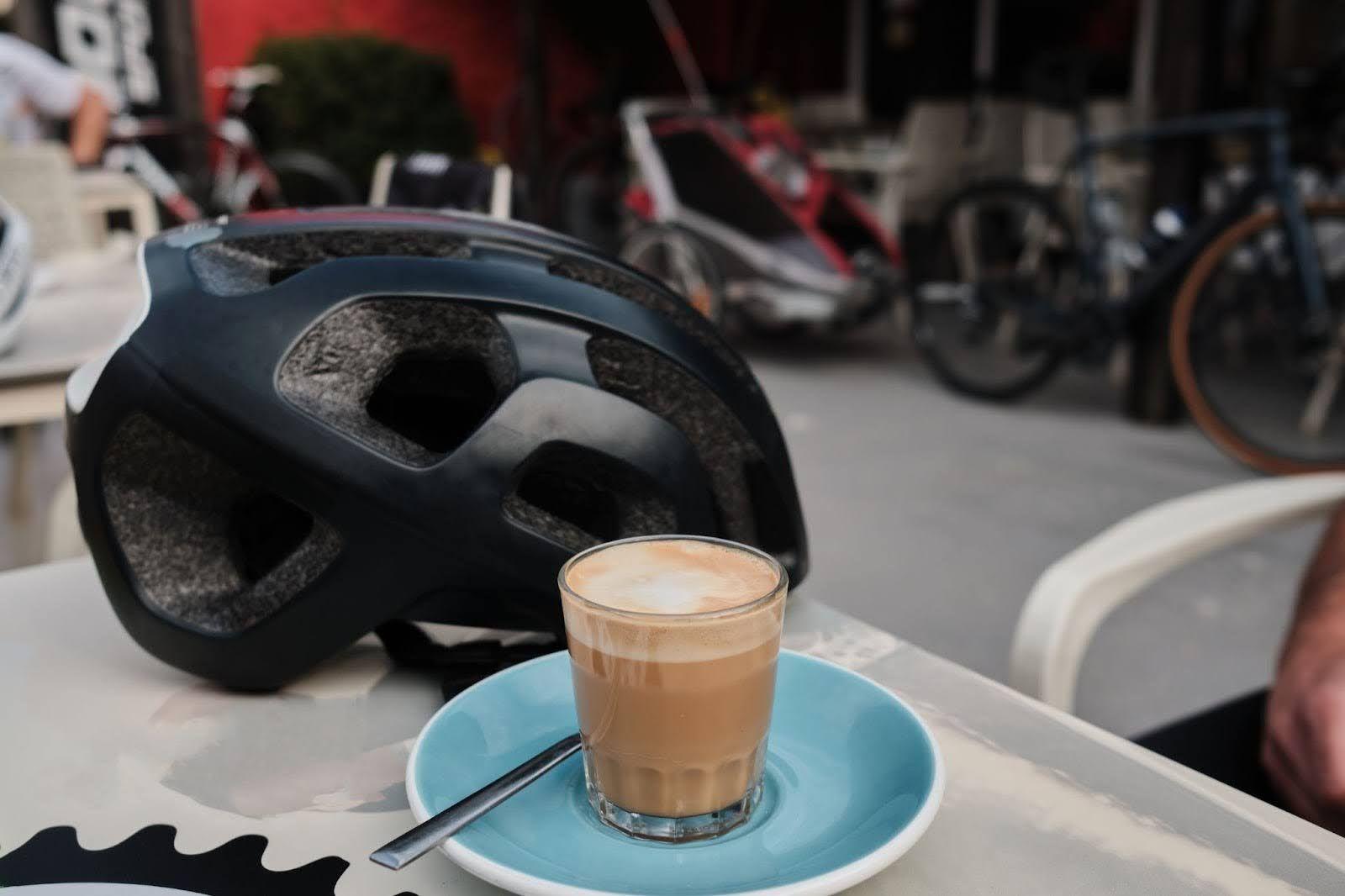Perhaps you wander in from your long ride, cleats clopping on the linoleum floor as you make a beeline for the kitchen, looking for anything and everything to stop your ravenous stomach from growling louder than that flock of motorcycles that passed you on Main Street. Or maybe you crawl off the smart trainer, stomach still cramping from one of those epic Alpine climbs on ROUVY and the last thing you can think about is putting something in your stomach right now.
While we need to listen to our bodies, we also need to understand what our bodies require to refuel and build strength.
Cycling recovery nutrition is a key aspect of getting faster, stronger and fitter on the bike. Not only does having a good post-ride nutrition strategy help you feel better faster, but it also helps your body prepare for your next workout.
The 3 Rs: rehydrate, replenish, repair
Perhaps you've heard of the 3 Rs of recovery nutrition: rehydrate, replenish and repair. The 3 Rs are essential aspects of a good post-ride nutrition strategy. Here's why.
Rehydrate
While exercising, we sweat out not only water but also sodium, potassium, magnesium and other essential minerals. Rehydration helps restore our electrolyte balance, aid muscle recovery, restore energy, regulate body temperature, maintain blood volume and support digestion. Even losing just 2 percent of our body weight through sweat can impair our physical and mental performance, causing cramps, dizziness and fatigue.
Replenish
Replenish means replenishing the glycogen stores that were lost during intense exercise. Glycogen is fuel stored in our muscles that we use for hard efforts. The more intense the exercise, the faster we use up glycogen. We want to replenish our stores after exercise by taking in carbohydrates.
Repair
Exercise is the stress or stimulus that makes our muscles grow. But we need to provide protein in order to support muscle growth and repair muscle tissue so that we can be strong and ready for our next workout.
Cycling recovery drinks
Recovery meals and drinks are key to helping cyclists replenish, repair and rehydrate. We can optimize our body's recovery with the right balance of the three Rs and the right timing.
A good cycling recovery drink will contain a balance of carbs, protein and electrolytes. For long endurance rides, a good recovery drink should contain a carb-to-protein ratio of approximately 4:1. For more intense efforts, you might even consider a ratio of 3 to 1 (carbs to protein).
If you're looking for a store-bought recovery drink, you might consider:
Skratch Labs Recovery Drink Mix in chocolate – 4:1 ratio of carbs to protein, 270 milligrams of sodium, and 200 calories.
SiS Beta Recovery – 2:1 ratio of carbs to protein, 302 milligrams of sodium, and 378 calories per serving.
Tailwind Recovery – 20 grams of protein, 34 grams of carbs, 500 milligrams of sodium, and 220 calories.
DIY recovery drink options
Recovery drinks can get expensive and there's no reason you can't make your own. Surprisingly, a tall glass of chocolate milk might be the best cycling recovery drink, and just what the body needs. With a carb-to-protein ratio of 4:1 and around 200 milligrams of sodium, it’s a well balanced recovery drink for much less.
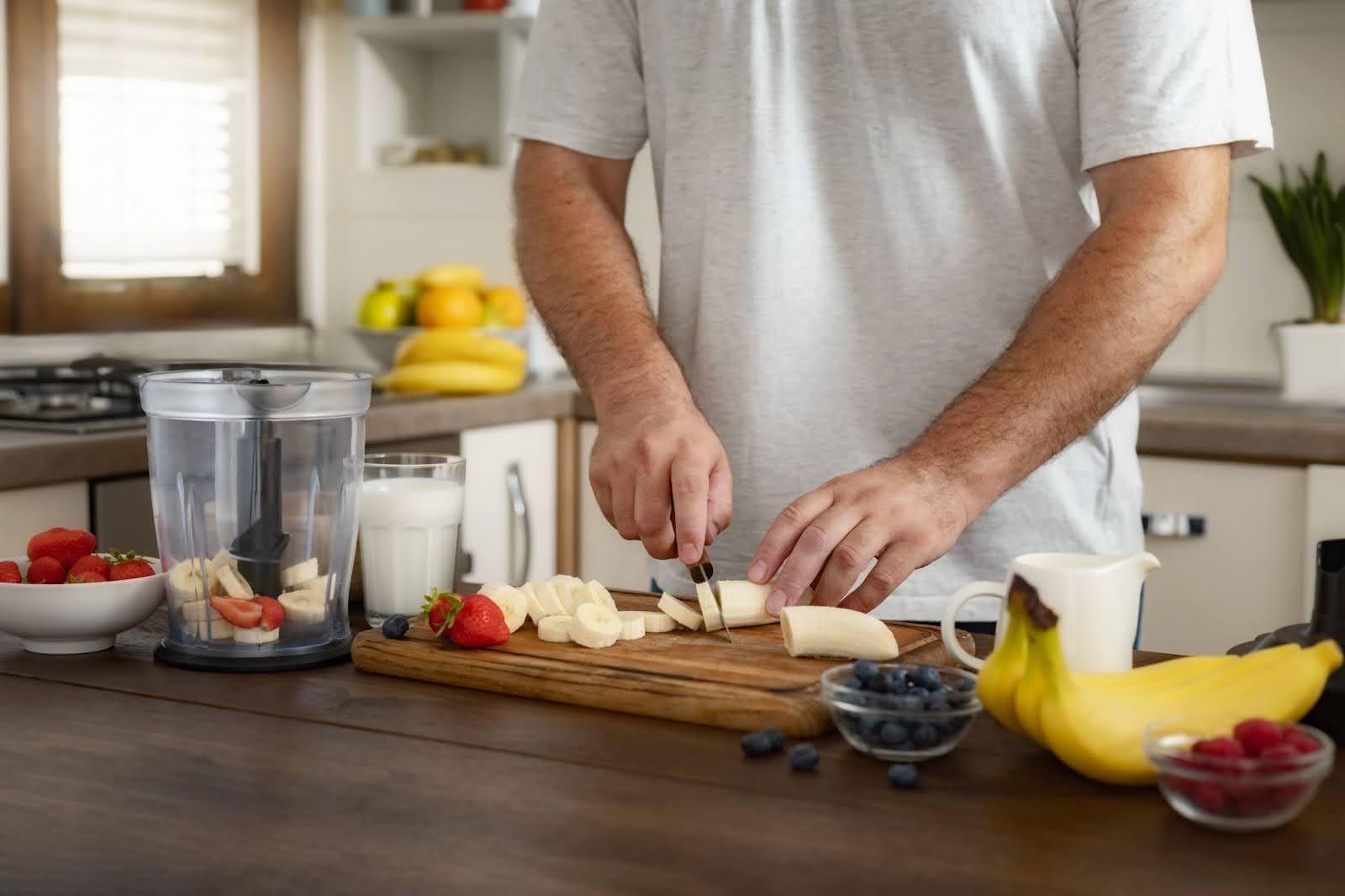
Another great option is to make a cycling recovery smoothie. You can experiment to find what works best, but you can easily make one with frozen bananas or berries, yogurt, protein powder, and a bit of added sodium. The banana and berries provide carbohydrates, the yogurt or protein powder supplies protein, and a dash of salt adds electrolytes.
Cycling recovery food
What if you're just starving after a long ride? You can incorporate cycling recovery foods instead of a drink. Use the same ratios – either a 4:1 or 3:1 carbohydrate-to-protein mix – to restore glycogen and prepare your muscles for recovery.
Examples of the best cycling recovery food include:
A rice-and-chicken bowl for the ideal mix of protein, carbs, and sodium.
A quinoa salad with beans and herbs. Quinoa is a complete protein with all nine essential amino acids.
An omelet and toast for a simple, balanced meal with protein, carbs and nutrients.
The benefits of whole foods for recovery
Supplements are great, especially if you’re in a hurry or just want to grab a quick recovery drink on the go. But eating whole foods can often be better than a pre-made recovery mix. Whole foods are more satisfying and provide fiber, vitamins, minerals, and antioxidants that improve nutrient absorption and gut health.
Easy recipes for post-ride recovery
You don't have to be a gourmet cook to make wholesome, healthy post-ride recipes. Here are some easy recipes to follow for your post-ride nutrition.
Recovery smoothie
Smoothies don't have to be complicated. You can also prep the ingredients ahead of time, so at the end of your ride, you can simply toss them all in the blender for a quick and delicious recovery meal.
Ingredients:
- 1 medium banana, frozen.
- 2 packed cups of baby spinach.
- 1 scoop protein powder (vanilla or unflavored works best).
- 1 cup milk (almond, soy, or cow's milk).
- Optional additions include flax, chia seeds, Greek yogurt, nut butter or other fruits.
Directions: Put the liquids into the blender first, then add your other ingredients and pulse until well blended. Add more milk if it's too thick or more banana or protein powder if it's too runny.
Protein-rich snacks
Greek yogurt and fruit: This provides a natural source of protein and carbohydrates. Add flax, chia, wheat germ, or nuts for extra nutrition.
No-bake protein balls: This is a favorite snack in my family. These no-bake protein balls are quick and easy to prepare, and you can store them in your fridge for up to five days.
Ingredients:
- 1/2 cup of quick oats.
- 1/2 cup of vanilla whey protein powder.
- 1/2 a teaspoon of cinnamon.
- 1 tablespoon of chia seeds.
- 1/2 cup of peanut butter (or other nut butter).
- 3 tablespoons of raw honey or maple syrup.
- 1 teaspoon of vanilla extract.
- 1/3 cup of raisins.
- 2-4 tablespoons of water.
Directions: Mix all the dry ingredients, then add the peanut butter, maple syrup and vanilla. Stir well, adjust moisture with water or milk, form into balls, and refrigerate. Each ball offers roughly 20 grams of carbs, 4 grams of protein, 20 milligrams of sodium and 130 calories.
Carbohydrate-rich meals
If your ride was intense, you'll want to increase your carb-to-protein ratio. You can achieve this by focusing on meals that are rich in carbohydrates. For example, I love to munch on a bowl of poached eggs over rice after one of the harder workouts on ROUVY. This gives me a lot of easily digestible carbohydrates alongside some protein to replace glycogen and help repair muscles. It’s probably one of the best cycling recovery foods.
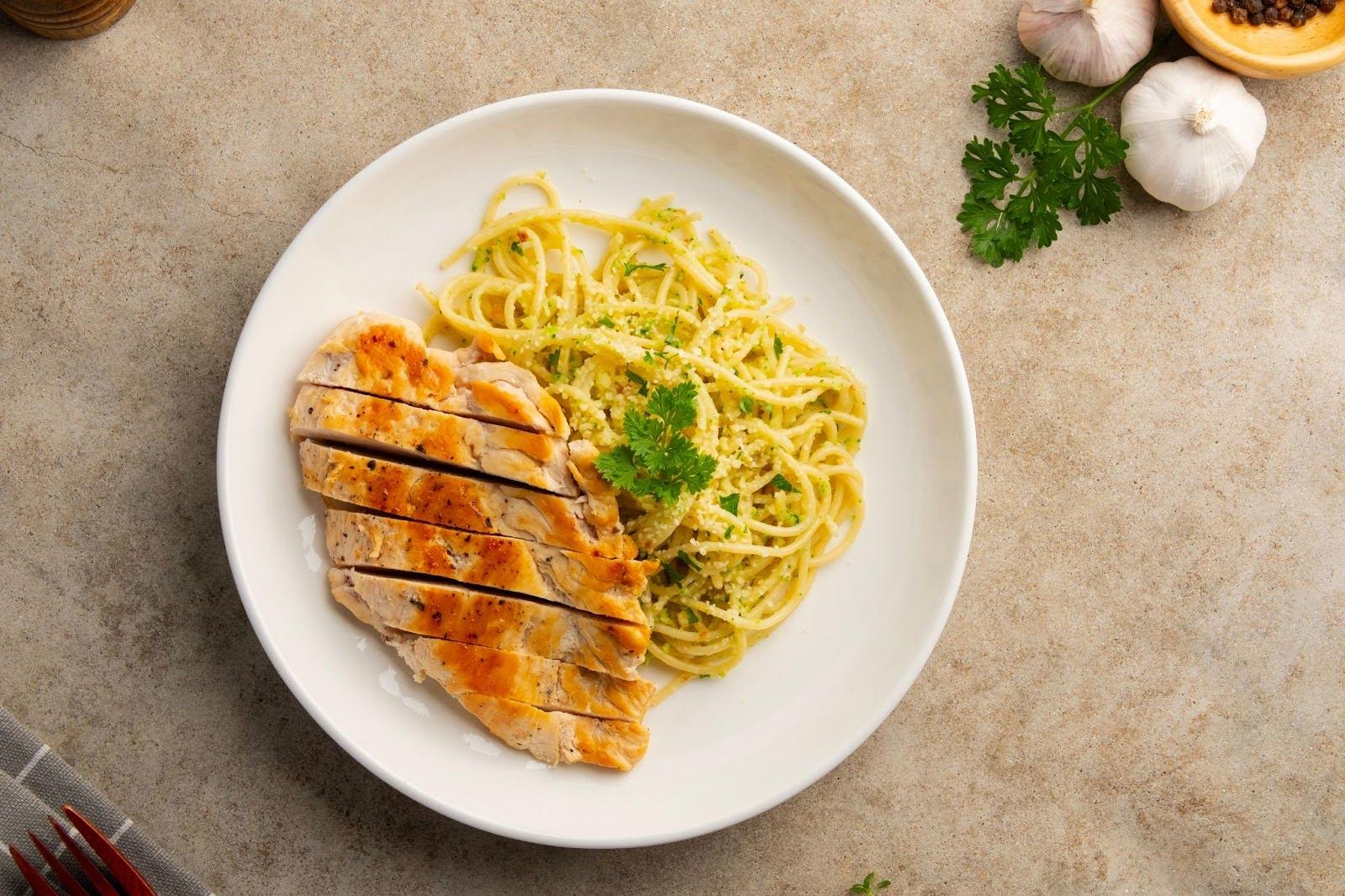
Pasta is also an easily digestible carbohydrate source. You might not want a heavy meal like chicken parmesan after you ride hard, but some buttered noodles and a little chicken breast will provide the bulk of your carbs and protein while being easy on the stomach.
Don't discount an old-fashioned potato, or better yet, a sweet potato. Microwave one for about five minutes for a rich source of vitamins, minerals and carbohydrates. Add in a little chicken or some beans to increase the protein intake for an easy meal.
Tips for maximizing recovery nutrition
The anabolic window is a period of time, about 30 to 60 minutes after an intense workout. It was thought that consuming protein and carbs at this time would promote muscle growth, and many trainers still believe this is the optimal time for refueling. Science has somewhat debunked this claim. If you exercise in a fasted state, then, yes, it is important to take advantage of this post-ride meal timing. If you're engaging in lighter, less strenuous, and well fueled exercise, however, this window can be extended by up to two hours.
For the most optimal recovery, remember to focus on the right carbs-to-protein ratio. It should be roughly 3:1 or 4:1 carbs to protein. This will quickly replenish your glycogen stores, support muscle repair, reduce delayed onset muscle soreness (DOMS), and help you prepare for your next workout.
Try to avoid heavy or fatty foods immediately after your rides, as this can slow the absorption of carbs and protein. It might make you feel more sluggish or even upset your stomach if you've just done a hard effort, so focus on lighter, more digestible foods.
Don't forget the importance of hydration and electrolytes. If you're drinking a pre-made recovery drink, your electrolytes will most likely already be included in the mix. However, if you are eating a recovery meal, snack, or smoothie, you may need to supplement with some extra electrolytes and liquids. You can weigh yourself immediately before and after exercise to find out your sweat rate (i.e. how much fluid you're losing during your workout).
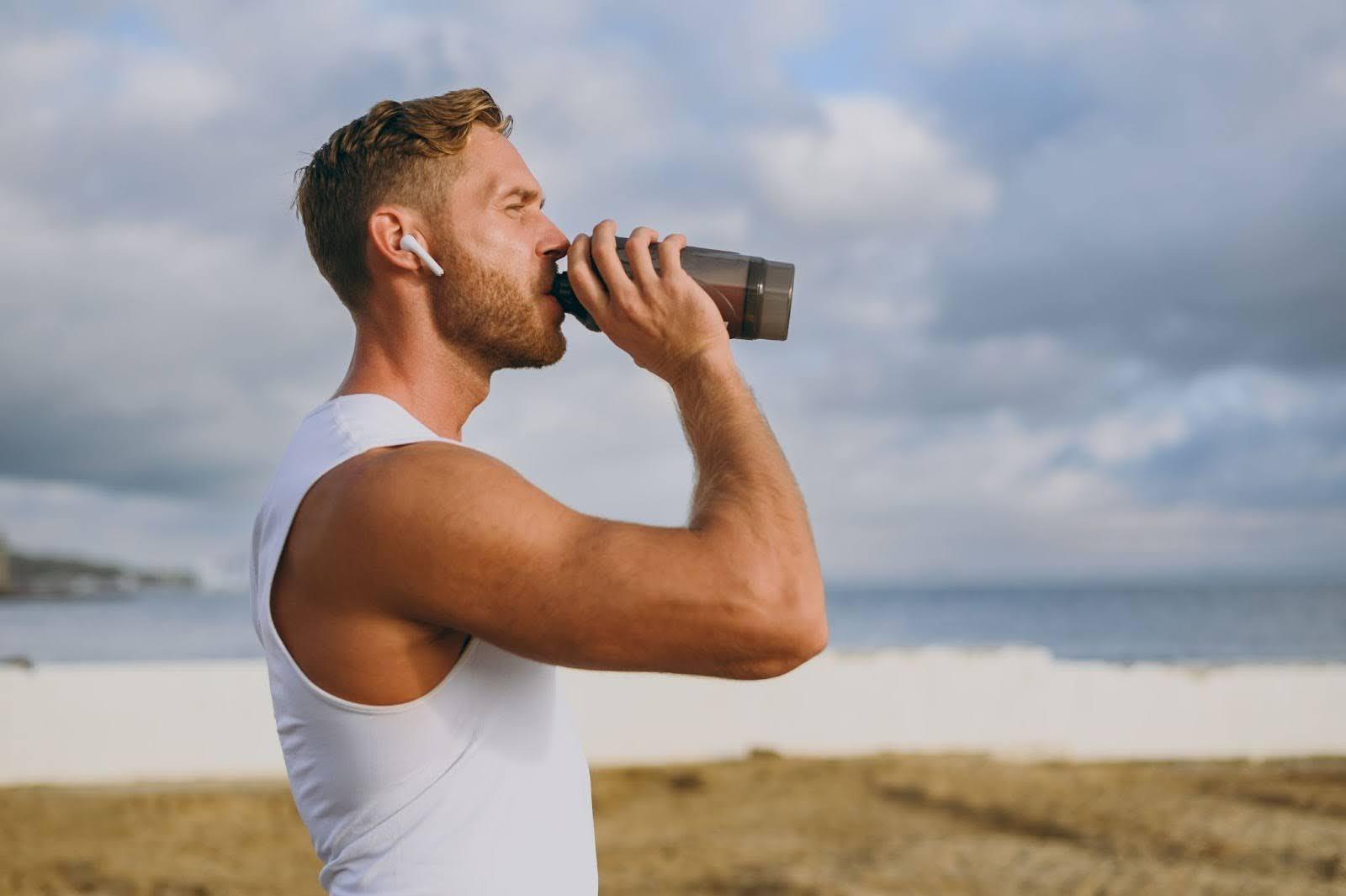
Conclusion: Fuel your next ride better
Don't stress about getting the perfect foods in your stomach at the ideal time! Instead, try to get a good balance of carbohydrates and protein (3 or 4:1, carbs to protein) shortly after you work out.
Don't overcomplicate nutrition, but do remember the 3 Rs: Rehydrate (replace fluids and electrolytes), Replenish (top up those carbohydrate stores), and Repair (feed your muscles with protein).
Try some new recipes – like the ones above – and enjoy what tastes good to you. Experiment with timing and ratios until you find a post-ride nutrition strategy that helps you feel your best and recover faster.
Further reading
- Nutrients, “Does Protein Ingestion Timing Affect Exercise-Induced Adaptations?”
- ROUVY, “Endurance Nutrition For Cyclists And Triathletes: What To Eat & When”
- Sports Medicine, “Nutritional Strategies to Improve Post-exercise Recovery and Subsequent Performance”
- ROUVY, “Recovery Rides Explained: Benefits And How to Do Them Right”
- Human Nutrition & Metabolism, “Chocolate Milk Significantly Reduced Serum Lactate Levels Compared to Other Recovery Drinks”

